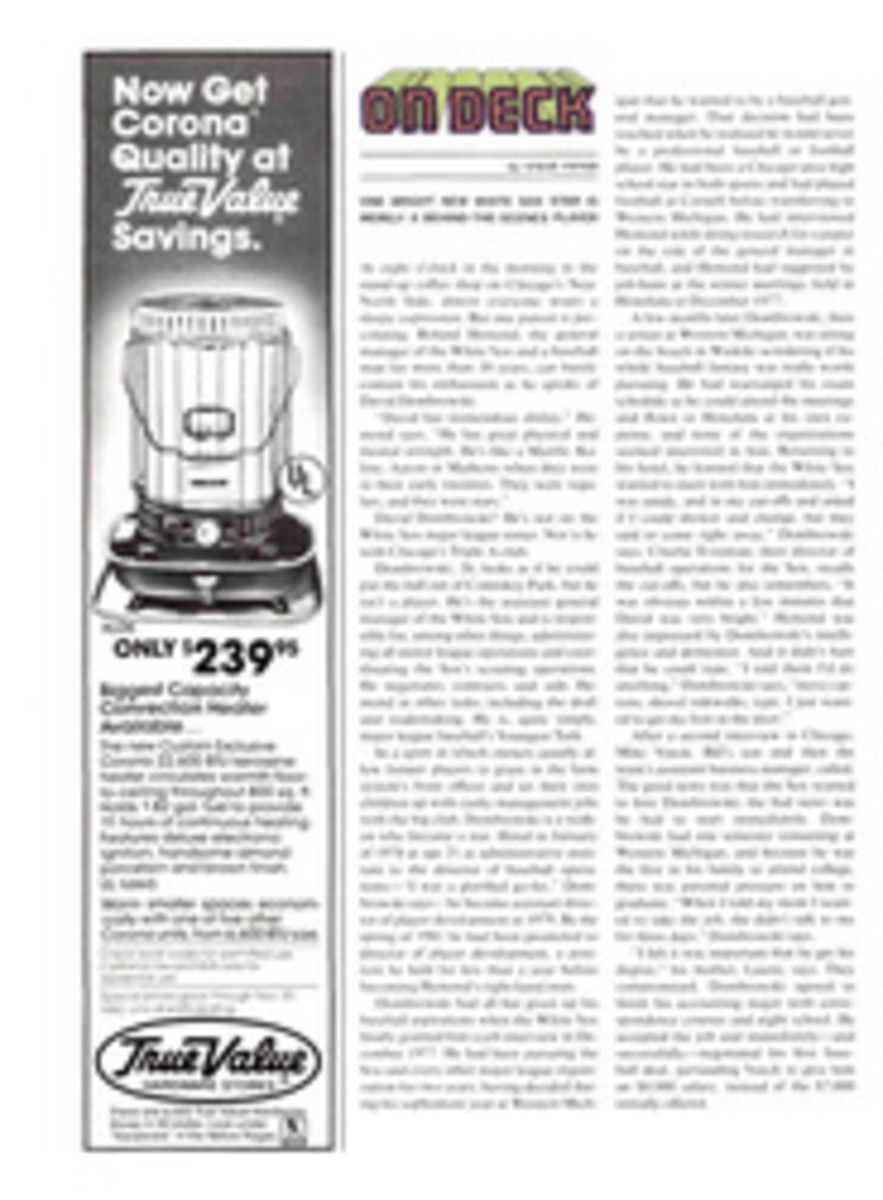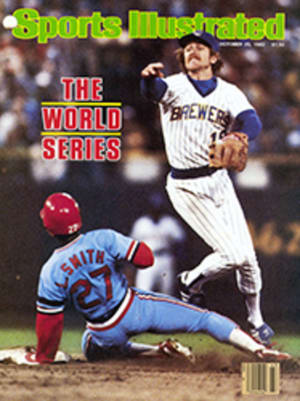
NBC: Nobody does it better
From all appearances, ABC's basic recipe for postseason baseball goes something like this: Take one cup of Al Michaels' brilliance and a dash of Jim Palmer's intelligence. Toss in Keith Jackson's embarrassing lack of baseball knowledge and a half-dozen or more missed replays. Add a number of replays of no interest at all. Then serve it up with little or no imagination while Tommy Lasorda bores everyone with his banquet one-liners.
So much for the appetizer, otherwise known as the playoffs. Now let's get to the main course, the World Series, as dished up by NBC. This is a recipe that can't miss.
You start with a 15-minute pregame show possessing creativity and charm. Handle each game with patience and care, lying in wait to catch the emotional reactions of players on camera. Run a replay to make a point, or don't run it at all. Let the drama of each moment speak for itself. Don't have your play-by-play man moan about a) his travel schedule or b) how he's missing his first college football Saturday in 20 years, which was Jackson's lament. He may not want to watch baseball, but presumably his viewers do. Finally, have down-to-earth people named Dick, Joe, Tony and Tom serve the meal.
Tasty, huh? Once again this fall, NBC picked the pockets of the guys in the yellow blazers. ABC is peerless on football, bowling and spanning the wide world for whatever it can scrounge up for weekend afternoons. But baseball? Sorry, Keith. Sorry, Howard. And sorry to whoever runs the camera covering the leftfield corner.
ABC was already behind by the final Orioles-Brewers game, in which it managed to blow the biggest catch of the month—Ben Oglivie's season-saving grab in the eighth. Oglivie slid across the foul line in pursuit of the ball—and vanished from Director Chet Forte's view, not to return even via replay. During that same telecast, Jackson and every other daydreamer at ABC also mistook Milwaukee Second Baseman Ed Romero for Jim Gantner until the game was five innings old. Ed Romero resembles Gantner the way Ricardo Montalban passes for Robert Redford.
This sort of thing set the tone for the network's playoff coverage. During the playoffs themselves, ABC's production improved only slightly. Howard Cosell did intersperse his usual exasperating digressions with some trenchant questions, but Jackson's down-home style—replete with "partnuhs," "big guys" and athletes described as forever "dodging the bullet"—while terrific for college football, is somehow ill-suited to baseball play-by-play. Forever engaging in whimsical chitchat, Jackson often neglected to tell us the number of outs and runners on base, and once he called the umpire a "referee." The cliché-ridden Lasorda came across as a windy managerial version of author/umpire Ron Luciano. (Earl Weaver, who joined the sparkling Palmer in the American League booth, was infinitely more insightful than Lasorda.) Finally, ABC was guilty of "forcing" replays—showing them simply because it had them, and often from the angle we had just seen.
That NBC succeeded while ABC failed is amazing when you consider it had four men in the booth (Dick Enberg, Joe Garagiola, Tony Kubek and Tom Seaver) to ABC's three: In these circumstances, three is a crowd, and four amounts to a mob. Coordinating Producer Mike Weisman needed a traffic cop to decide who was in charge of play-by-play, but at least each talker kept his mind on baseball instead of on Eusebio Pedroza's upcoming fight. Kubek and Seaver made especially incisive points.
In Game 1, for example, Kubek wondered if Cardinal Shortstop Ozzie Smith wasn't playing the Brewers a few steps too deep, seeing that Smith was too late with a couple of his throws to first. The next night, the Wizard of Oz proved Kubek right by playing closer. And late in Game 3, Seaver allowed as how St. Louis Manager Whitey Herzog might pay for using reliever Bruce Sutter 2‚Öì innings. Sure enough, the bill came due; Herzog needed Sutter in Game 4 and couldn't risk pitching him.
As for pretty pictures, Director Harry Coyle, who was working his 33rd World Series (Coyle's first, in 1947, was Jackie Robinson's first), proved himself a master. No missed Oglivie catches in the corner. And instead of giving us dozens of shots per game of that old ABC staple, Baseball Wives on Parade, Coyle limited himself to the meaningful glimpse. We saw, for example, the hands of Mrs. Lonnie Smith when her husband came up to bat with the bases loaded, and what do you know, the hands were held, palms together, in prayer.
PHOTO
NBC's men in the booth—Kubek, Garagiola, Enberg and Seaver—made Series coverage a gourmet feast.

